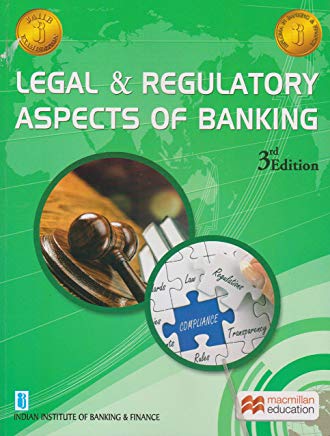JAIIB AFB Unit 2 - Calculation of YTM (Part 2) (Year: 2019)
YTM
CURRENT YIELD ON BOND
It measures the rate of return earned on a bond, if it is purchased at its current market price and if the coupon interest is received.
Current yield = Coupon interest/current market price
If a bond of face value Rs. 1,000, carrying a coupon interest rate of 8 per cent, is quoted in the market at Rs. 800, then the
Current yield of the bond is = 8 per cent * 1,000/800 = 10 per cent
YIELD-TO-MATURITY OF BOND
It is the rate of return earned by an investor, who purchases a bond and holds it until the maturity.
Numerical problems on YTM
Consider a Rs. 1,000 par value bond, whose current market price is Rs. 850/-. The bond carries a coupon rate of 8 per cent and has the maturity period of nine years. What would be the rate of return that an investor earns if he purchases the bond and holds until maturity?
Solution
If kd is the yield to maturity then,
850 = 80 (PVIFA kd per cent, 9 yrs) + 1,000 (PVIF kd, 9 yrs)
To calculate the value of kd, we have to try several values:
= 80 (PVIFA 12 per cent, 9) + 1,000 (PVIF 12 per cent, 9)
= 80x 5.328+ 1,000 x (0.361)
= 426.24 + 361 =787.24
Since, the above value is less than 850, we have to try with value less than 12 per cent. Let us try with
kd =10 per cent
= 80 (PVIFA 10 per cent, 9) + 1,000 (PVIF 10 per cent, 9) = 80
x 5.759 + 1.000 * 0.424 = 884.72
From the above it is clear that kd lies between 10% and 12%. Now we have to use linear interpolation in the range of 10% and 12%. Using it, we find that kd is equal to the following:
(884.72-850) / (884.72-787.24)
34.72 / 97.48 = 10%.+
.71=10.71%
Therefore, the yield to maturity is 10.71%
For two bonds X and Y having face value of Rs. 1.000, coupon rate of 10 per cent each, years to maturity is three and six years respectively.
Market value of bond X at YTM of 10 per cent is
100 PVIFA (10 per cent, 3) + 1.000 PVIF (10 per cent, 3) = 1,000
Market Value of Bond Y at YTM of 10 per cent is
100 PVIFA (10 per cent, 6) + 1,000 PVIF (10 per cent, 6) = 1,000
Now market value of bond X at YTM of 11 per cent is
100 PVIFA (11 per cent, 3) + 1,000 PVIF (11 per cent, 3) = 975
And Market Value of Bond Y at YTM of 11 per cent is
100 PVIFA (11 per cent, 6) + 1,000 PVIF (11 per cent, 6) = 958
Change in price for X on increasing YTM by 1 per cent is (1,000 - 975)/l,000 = 2.5 per cent
Change in price for Y on increasing YTM by 1 per cent is (1,000 - 958)/1,000 = 4.2 per cent
Thus, longer-term bond is more sensitive to interest rate change than short-term bond.
Consider a bond having a face value of Rs. 1,000 with a coupon rate of 10 per cent and maturity period of five years. Let the YTM be 10 per cent. Market price of the bond will be equal to Rs. 1,000.
A 1 per cent increase in YTM to 11 per cent changes price to Rs. 963.04 (100 PVIFA 11 per cent, 5 + 1000 PBV1F 11 per cent, 5), a decrease of 3.7 per cent.
A decrease of 1 per cent YTM to 9 per cent changes the price to Rs. 1,039 (100 PVIFA 9 per cent, 5 + 1,000 PVIF 9 per cent, 5) an increase of 3.9 per cent.
Thus, an increase in bond's yield caused a price decrease that is smaller than the price increase caused by an equal size decrease in yield.
A bond of face value of Rs. 1,000 par value X bond with a coupon rate of 12 per cent maturity period of six years and YTM of 10 per cent. The market value of the bond will be Rs. 1,087.
Consider another identical bond Y but with differing YTM of 20 per cent. The market value of this bond will be Rs. 734.
If the YTM increase by 20 per cent, i.e. YTM of bond X rises to 12 per cent (10 x 1.2) and bond Y rises to 24 per cent (i.e., 20 x 1.2) then the market value of both bonds will change to:
Bond ABC: 120 PVIFA (12 per cent, 6) + 1,000 PVIF (12 per cent. 6) = Rs. 1,000
Bond XYZ: 120 PVIFA (24 per cent, 6) + 1,000 PVIF (24 per cent, 6) = 638
Market value of ABC bond with a lower YTM decreased by 8 per cent whereas in case of XYZ bond with an higher YTM the decrease is 13 per cent.
JAIIB Study Material
| JAIIB Paper 1 Study Material |
| JAIIB Paper 2 Study Material |
| JAIIB Paper 3 Study Material |


